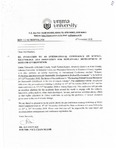A Pressure Wave Theory For a Transient Drawdown in an Unconfined Aquifer
Abstract
Previous observations indicate that when an unconfined aquifer is pumped at a constant rate, the drawdown-time curve exhibits a three-segment graph; a steep early time segment, a flatter intermediate segment and a somehow steeper late time segment. Previous studies have reported that using type curves developed from the existing analytical models, for prediction of transient drawdown in unconfined aquifer during pumping, give unrealistically low values of specific yield. The existing analytical models were developed on the assumptions that the steep early time segment of the time-drawdown is due to the elasticity of the aquifer and water, and that the water table is a material boundary. On the contrary, previous field observations have reported that the steep early time segment of the drawdown-time curve corresponds with the period of increasing hydraulic gradients and that the water tables declines more rapidly than drainage of the water from the aquifer. In this paper we present a new perspective of the physical processes and a new pressure wave theory that can account for the above observations, without considering the elasticity of the aquifer and the water. The new theory has been developed on the basis that a water table is an energy boundary and can reproduce the entire three-segment drawdown-time graph based only on the changing energy boundary conditions at the pumping.
Collections
- Conferences [33]

